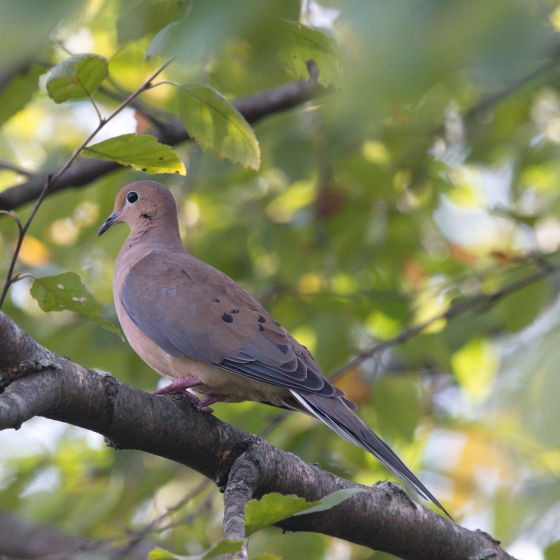Mourning Dove
Zenaida macroura (Linnaeus, 1758)
6950

Family: Columbiformes > Columbidae

This small, dark dove is an extremely rare autumn visitor from North America, where its breeding range extends from Great Lakes south to the Gulf of Mexico. Some populations are migratory.
Identification
Develop your bird ID skills with our training courses
Our interactive online courses are a great way to develop your bird identification skills, whether you're new to the hobby or a competent birder looking to hone your abilities.
Browse training coursesStatus and Trends
Population size and trends and patterns of distribution based on BTO surveys and atlases with data collected by BTO volunteers.
DISTRIBUTION
This species is a rare vagrant and was recorded during Bird Atlas 2007–11 as shown on the map.
More from the Atlas Mapstore.
Occupied 10-km squares in UK
| No. occupied in winter | 1 |
| % occupied in winter | 0.03 |
DISTRIBUTION CHANGE
This vagrant is too rarely reported to map distribution change.
Movement
Information about movement and migration based on online bird portals (e.g. BirdTrack), Ringing schemes and tracking studies.
RINGING RECOVERIES
View a summary of recoveries in the Online Ringing Report.
Biology
Lifecycle and body size information about Mourning Dove, including statistics on nesting, eggs and lifespan based on BTO ringing and nest recording data.
PRODUCTIVITY & NESTING
Sample sizes are too small to report Productivity and Nesting statistics for this species.
BIOMETRICS
Sample sizes are too small to report Biometrics for this species.
Feather measurements and photos on featherbase 
CODES & CLASSIFICATION
Field Codes 
|
5-letter code: | Euring: 6950 |
For information in another language (where available) click on a linked name
Links to more studies from ConservationEvidence.com
- Evaluation of the impact of the pilot UK Arable Stewardship Scheme on breeding and wintering birds
- Effects of restoring oak savanna on bird communities and populations
- Breeding bird response to field border presence and width
Read more studies about Mourning Dove on Conservation Evidence >
Would you like to search for another species?





Share this page